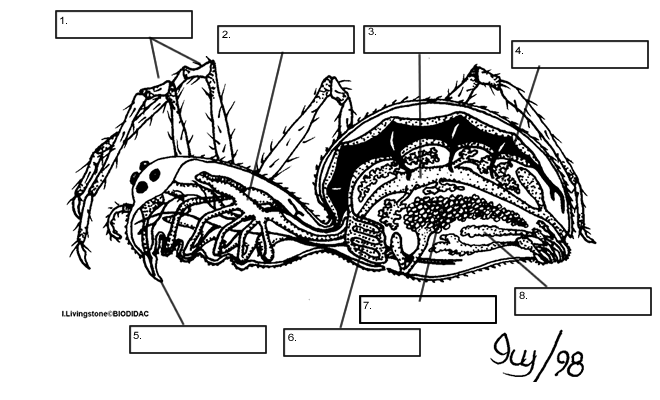
1. Structures that extend from the arthropod's body are called __________________
2. The word "arthropoda" means _________________________
3. What two features do arthropods and annelids share? ___________________________________
4. How many (approximately) species of arthropods have been recorded: ______________________
Use figure 31-2 to determine which pair is most closely related. (circle)
5. millipedes & centipedes or centipedes & ladybugs
6. spiders & sea spiders or spiders & scorpions
7. pill bugs & scorpions or shrimps & ladybugs
8. Write the name of the subphylum - Chelicerata, Uniramia, or Crustacea.
__________________ scorpion
__________________ spider
__________________ ladybug
__________________ centipede
__________________ shrimp
9. What are the three distinct body regions of adult arthropods
____________________________________________________________________
10. In some arthropods the head and thorax fuse to form a ______________________
11. The exoskeleton provides protection and prevents ________________________.
12. The shedding of the exoskeleton is called _______________________
13. Air enters the body of the arthropod through ___________________ and then
passes through a network of tubes called _________________
14. Malpighian tubules function in [ respiration / excretion ]
31-2 Spiders and Other Arachnids
15. What are chelicerae? ______________________________
16. Name three animals that belong to the Class Arachnida:
____________________________________________________________________
17. Appendages that spin webs are called __________________________
18. Spiders are [ herbivores / carnivores ]
19. What two spiders in the United states are dangerous to humans
____________________________________________________________________
20. What are the pedipalps of a scorpion used for? ________________________
21. Deer ticks are known for spreading what disease? _____________________
Label the spider. (See page 689).
